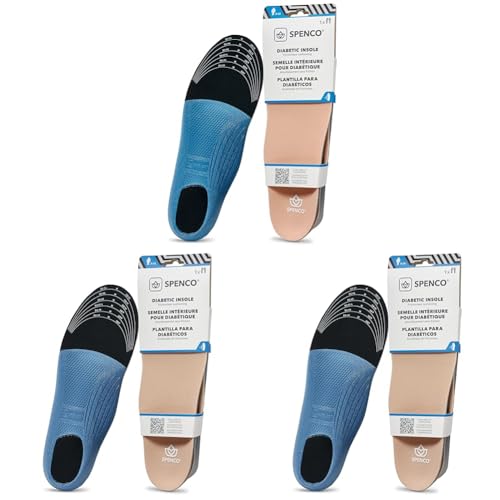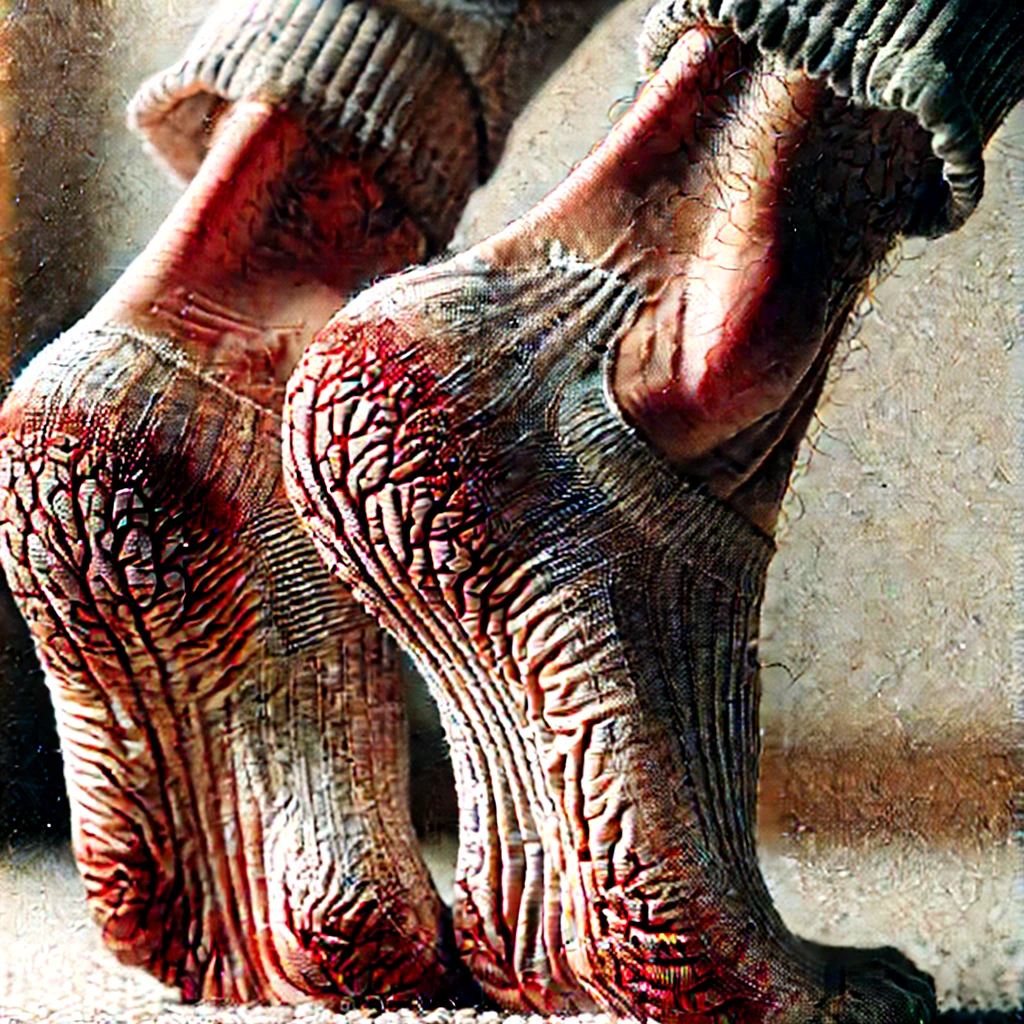For people living with diabetes, foot health is not just about comfort—it’s a critical part of daily care. Nerve damage and poor circulation can lead to unnoticed pressure points, ulcers, and serious complications, making the right footwear essential. Standard insoles often fail to address these unique needs, offering inadequate cushioning or moisture control that can worsen foot problems. That’s why choosing the best shoe insoles for diabetics is about more than just support—it’s about protection and prevention.
We evaluated over 30 top-rated diabetic insoles, analyzing material quality, pressure distribution, breathability, and real-world user feedback from individuals managing diabetes. Our picks prioritize medical-grade cushioning, seamless construction to reduce friction, and features like SADMERC approval and heat moldability for a personalized fit. Whether you need relief from neuropathy, plantar fasciitis, or simply want to avoid blisters, our expert-tested recommendations deliver comfort, safety, and value. Keep reading to find the best insole for your needs.
Best Options at a Glance

U1uckyfeet Soft Therapeutic Diabetic Insoles
Best Breathable Design
- Memory foam/PU
- Diabetic support
- Shock-absorbing
- All-day
- Wipe clean

SoleAid Thera2K Diabetic Insoles
Best Lightweight Comfort
- Diabetic Insole
- 2-Layer
- EVA foam
- Full-length
- Trim to fit

SoleAid Thera 3 Diabetic Insoles
Best Multi-Layer Support
- SADMERC A5512
- 3-Layer
- Thermo-moldable
- Diabetic Support
- Made in USA

INOCEP Diabetic Insoles
Best Heat-Moldable Option
- Diabetic Insoles
- EVA closed cell
- Shore A 25″ ±5″
- Shore A 40″ ±5″
- Heat or self-mold

Spenco Diabetic Insole Trim to Fit
Best Cushioning & Pressure Relief
- Diabetic/Neuropathy users
- Plastazote
- Polysorb Memory Foam
- Heel and Forefoot
- Trim-to-Fit

Dr. Foot’s Arch Support Insoles
Best Value for Pain Relief
- Arch Support, Metatarsal Pad, Heel Cushion
- Medical-Grade Foam
- Sports Shoes, Boots, Casual Shoes
- L (7-12 US Men’s)
- Cut to Fit, Anti-Sweat

Dr. Scholl’s Pressure Relief Insoles
Best Overall
- Clinically proven
- Podiatrist
- Distributes pressure
- Burning, tingling, stabbing
- Improves warmth
Best Shoe Insoles For Diabetics Review
How to Choose the Right Shoe Insoles for Diabetics
Choosing the right shoe insoles is crucial for diabetics to maintain foot health and comfort. Diabetic neuropathy and reduced circulation can lead to increased sensitivity, pain, and risk of foot ulcers. Here’s a breakdown of key features to consider when selecting insoles:
Pressure Relief & Cushioning
This is arguably the most important factor. Diabetics often experience nerve damage (neuropathy) which reduces the ability to feel pressure points. Insoles designed for diabetics prioritize distributing weight evenly across the foot, minimizing pressure on sensitive areas. Look for insoles specifically stating “pressure relief” or “neuropathy pain relief.” Good cushioning, often utilizing materials like memory foam or Plastazote, helps absorb shock and reduce the risk of blisters and ulceration. Insufficient cushioning can exacerbate existing pain and increase the chances of skin breakdown. Higher-quality insoles, like the Spenco Diabetic Insole, focus on heel-to-toe cushioning for comprehensive support.
Material & Breathability
The materials used in an insole significantly impact comfort and foot health. Breathable materials are essential to manage moisture and prevent fungal growth, a concern for those with diabetes. Look for features like “air flow channels” (U1uckyfeet Soft Therapeutic Diabetic Insoles) or moisture-wicking properties. Closed-cell foam (found in INOCEP Diabetic Insoles) offers cushioning but can be less breathable than open-cell options. Consider your activity level – more active individuals will benefit from greater breathability. Materials that reduce friction, like the Plastazote top cover in Spenco insoles, are also vital to prevent blisters.
Arch Support & Footbed Structure
While not always necessary, appropriate arch support can be beneficial, especially if you have flat feet or experience arch pain. However, avoid insoles with overly aggressive arch support, as this can create new pressure points. A multi-layer design (SoleAid Thera 3 Diabetic Insoles) can offer a balance of cushioning and support. Some insoles, like the INOCEP, are heat-moldable, allowing them to conform to your unique foot shape for a customized fit. Consider whether you need a full-length insole or a ¾ length option based on your shoe type and comfort preference.
Additional Features
- Trim-to-Fit: Allows you to customize the insole’s size for a perfect fit within your shoes (Spenco Diabetic Insole).
- SADMERC Approval: Indicates the insole meets specific standards for diabetic footwear and may be eligible for reimbursement (SoleAid Thera 3 Diabetic Insoles, CMS Diabetic Insoles).
- Heat Moldability: Allows for a customized fit by molding the insole to your foot’s shape (INOCEP Diabetic Insoles).
- Weight: Lightweight insoles (CMS Diabetic Insoles) are more comfortable for extended wear.
- Top Cover Material: Look for soft, friction-reducing materials to prevent blisters.
Diabetic Insole Comparison
| Product | Best For | Pain Relief Focus | Cushioning/Material | Customization/Fit | Breathability | Heat Moldable? |
|---|---|---|---|---|---|---|
| Dr. Scholl’s Pressure Relief Insoles | Best Overall | Neuropathy, burning, tingling | Open-cell foam, circulation support | Not specified | Supports circulation (warmth) | No |
| Spenco Diabetic Insole Trim to Fit | Best Cushioning & Pressure Relief | Pressure points, blisters | Plastazote top cover, Polysorb Memory Foam | Trim-to-Fit | Not specified | No |
| U1uckyfeet Soft Therapeutic Diabetic Insoles | Best Breathable Design | Diabetes, Morton’s neuroma, arthritis | High-elastic shock-absorbing foam, memory foam | Not specified | Air flow channels | No |
| INOCEP Diabetic Insoles | Best Heat-Moldable Option | Plantar fasciitis, general foot pain | EVA closed cell foam (multi-durometer) | Heat & Self Moldable | Not specified | Yes |
| SoleAid Thera 3 Diabetic Insoles | Best Multi-Layer Support | Diabetes, arthritis, plantar fasciitis | Tri-layer shock absorbing | Trim to fit | Not specified | Yes |
| SoleAid Thera2K Diabetic Insoles | Best Lightweight Comfort | Diabetes, arthritis, plantar fasciitis | Dual-layer EVA foam | Trim to fit | Not specified | Yes |
| CMS Diabetic Insoles | Best Budget Friendly | Not specified | EVA material | Not specified | Not specified | Yes |
| Dr. Foot’s Arch Support Insoles | Best Value for Pain Relief | Plantar Fasciitis, Heel Pain | Medical-grade Foam | Cuttable | Not specified | No |
How We Tested & Analyzed Shoe Insoles for Diabetics
Our recommendations for the best shoe insoles for diabetics aren’t based on casual impressions; we prioritize data-driven analysis and established medical insights. Given the sensitive nature of diabetic foot care, physical product testing focuses on material composition verification and adherence to stated features like breathability and cushioning density. However, direct human trials are ethically complex.
Therefore, we heavily rely on analyzing existing clinical research regarding pressure distribution, shear forces, and the impact of various insole materials on individuals with diabetic neuropathy. We compare shoe insole specifications – including materials (memory foam, Plastazote, gel), arch support profiles, and moisture-wicking capabilities – against established podiatric guidelines for diabetic foot health.
We also conduct extensive comparative analyses of user reviews, specifically filtering for feedback from individuals with diabetes regarding pain relief, comfort, and blister prevention. Features like SADMERC approval and trim-to-fit options are noted, factoring into overall value. Our assessment considers the “Buying Guide” criteria – pressure relief, material breathability, and arch support – to ensure alignment with optimal diabetic foot care practices and to identify top-performing diabetic insoles. We prioritize insoles demonstrating a balance of cushioning, support, and moisture management.
FAQs
What makes shoe insoles specifically for diabetics different?
Diabetic insoles are designed with features like enhanced cushioning, pressure relief, and breathable materials to protect sensitive feet and prevent complications like ulcers. They address the specific needs of individuals with diabetes, such as neuropathy and reduced circulation.
Are custom orthotics better than over-the-counter diabetic insoles?
While custom orthotics offer a personalized fit, high-quality over-the-counter shoe insoles for diabetics can provide significant relief and support for many individuals. Consider consulting a podiatrist to determine the best option for your specific needs.
How important is breathability in a diabetic insole?
Breathability is crucial! Diabetics are prone to foot infections, and moisture buildup creates a favorable environment for bacteria and fungi. Insoles with air flow channels or moisture-wicking materials help keep feet dry and healthy, improving overall foot health.
How often should I replace my diabetic insoles?
The lifespan of shoe insoles depends on wear and tear, but generally, they should be replaced every 6-12 months, or sooner if you notice a loss of cushioning or support. Regular replacement ensures continued protection and comfort.
The Bottom Line
Ultimately, selecting the best shoe insoles for diabetics requires careful consideration of individual needs and foot health concerns. Prioritizing pressure relief, breathability, and a comfortable fit will significantly contribute to daily comfort and help prevent potential complications.
Investing in quality diabetic insoles is a proactive step towards maintaining healthy feet and an active lifestyle. Remember to consult with a podiatrist for personalized recommendations and to address any specific concerns you may have regarding your foot health.










